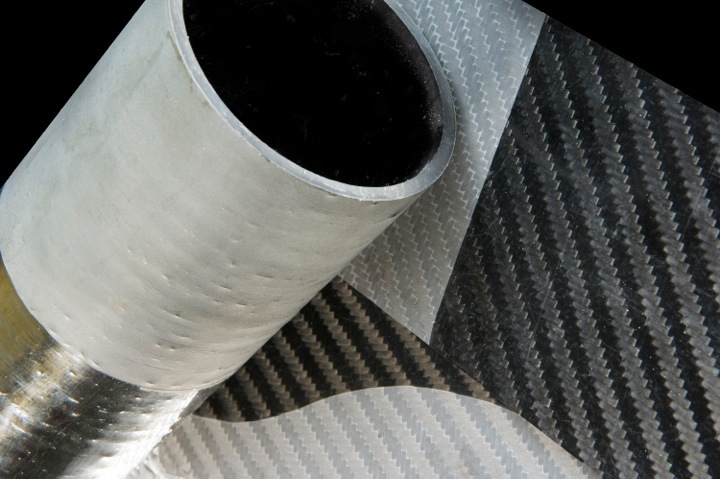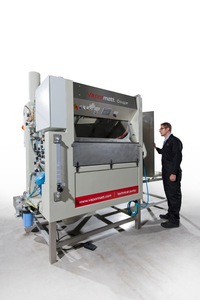

|
Edward Lowton
Editor |


|
Composites: Enhancing performance
05 January 2015
Driven by the need to reduce weight without compromising structural integrity for the automotive and aerospace industries, composites innovation has been extensive and occurred at an incredibly rapid pace. In this article, Phil Dawes, composites specialist at Vapormatt, explains why wet blasting is one of the most effective surface preparation methods for improving product quality

For industry, the ability to consistently produce parts with a high quality surface finish that is cost-effective has long been a frustrating dilemma. Surface preparation is as an important step in producing a robust bond and is crucial to ensuring strength and durability is maximised. However, the processes that have traditionally been used, such as manual abrasion and dry blasting, are sometimes unable to provide precise and reproducible results, leading to bonding failures at the assembly stage.
Wet blasting
Wet blasting can offer manufacturers enhanced precision and also reproducibility for composite part surface preparation.
The wet blast process combines compressed air, abrasive media and water in a slurry form to create a mechanical action that gives an abrasive effect. The introduction of water allows for a lubricating effect, allowing the slurry to flow across the surface, making it easier to process complex shapes, while also delivering uniform finishes for more consistent bonds.
Consistency is especially essential when preparing high value composite parts, such as fan blades for aerospace or engine parts for automotive. In dry and manual abrasion processes a common concern and costly problem is the over-processing of composites, which if done for even a few seconds too many can reveal underlying fibres causing damage to the part. The wet blasting process, however, can be used to prevent fibre damage through the use of slurry and air pressure controls. With these controls in place, a finely tuned buffer can be configured to ensure a gentler action that will leave underlying fibres undamaged – even in the harshest of processing environments.
Getting it right
Although the wet blasting process is made up of a number of different components, the slurry is possibly the most important. It is the 'life blood' of the process, with the pumping system its 'heart'. It is thefore critical that operators do not fail to control the concentration of this slurry consistency, otherwise finish quality can be significantly reduced.
Further to this, as health and safety in the workplace becomes increasingly important to businesses, by correctly operating wet blasting systems businesses can enhance employee safety. Enclosed machines ensure a high level of safety, and because wet blasting doesn’t require chemicals, the health of workers is further protected.
Surface preparation
Increasing demand for superior surface preparation has led to the design and manufacture of new machines that offer manufacturers a convenient means of processing a variety of materials. One such example is the Vapormatt Cougar, which the National Composites Centre in Bristol has used extensively due to its process controls, safety and reproducibility. It has enabled a number of its aerospace members to enhance and optimise the quality of their bonding processes.
A variety of wet blasting machines are available to suit different customer needs. Solutions range from compact manual cabinets, designed for the selective treatment of smaller parts and research work, up to fully automated production systems for larger and more complex parts. Therefore, it is advisable for businesses to consult with a specialist in this process to get the most valuable solution for specific requirements and applications.
Summary
As production methods and technologies in the aerospace and automotive sectors have improved, surface preparation specialists have developed new and innovative ways to deliver the controllability and premium surface finish that is required. The wet blasting process delivers the high quality finish and consistency that is demanded for composite parts and as a result is increasingly being used in the machine tool sector. This trend is set to continue as more and more business begin to recognise the value of wet blasting and introduce it to their production process.


















